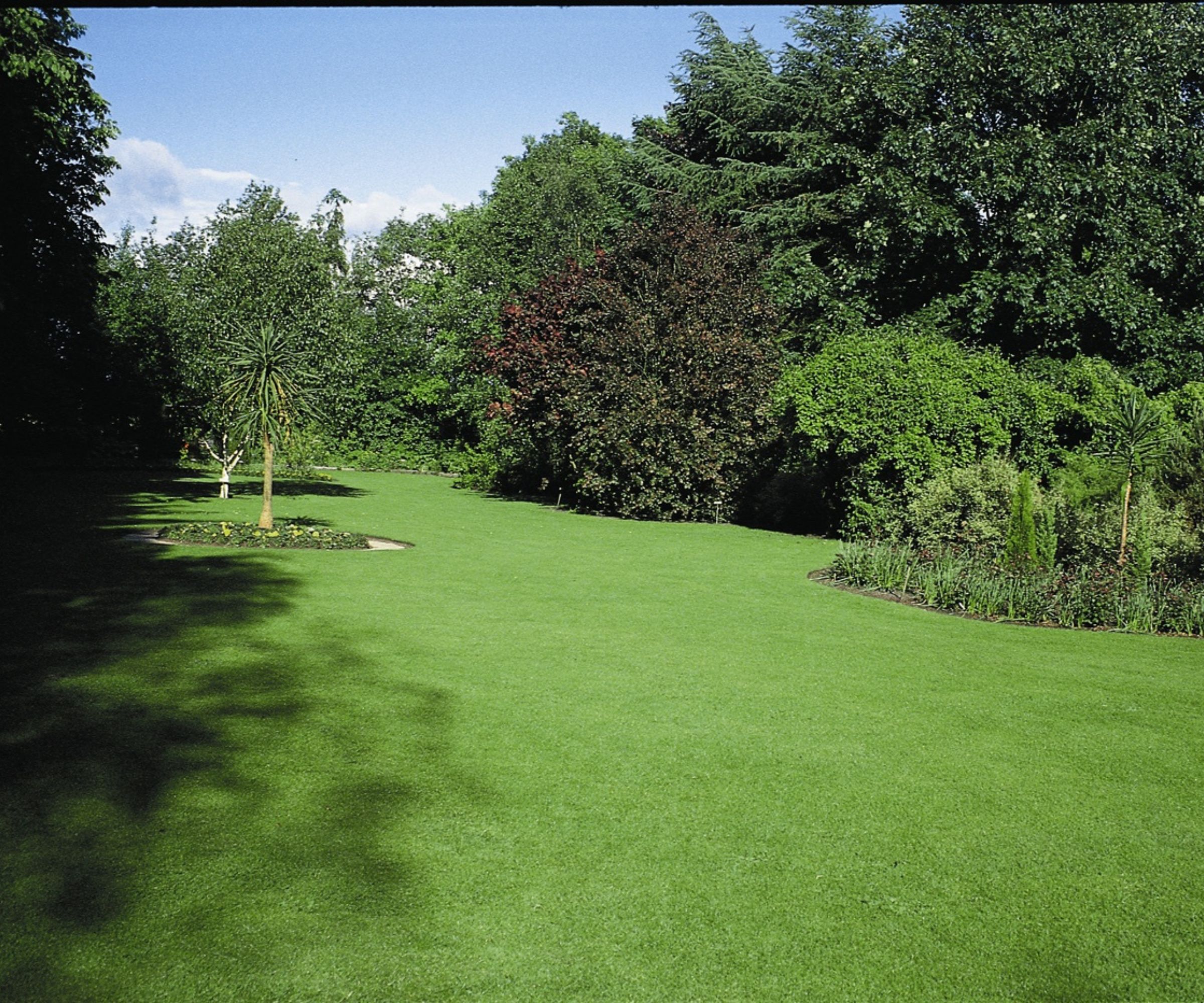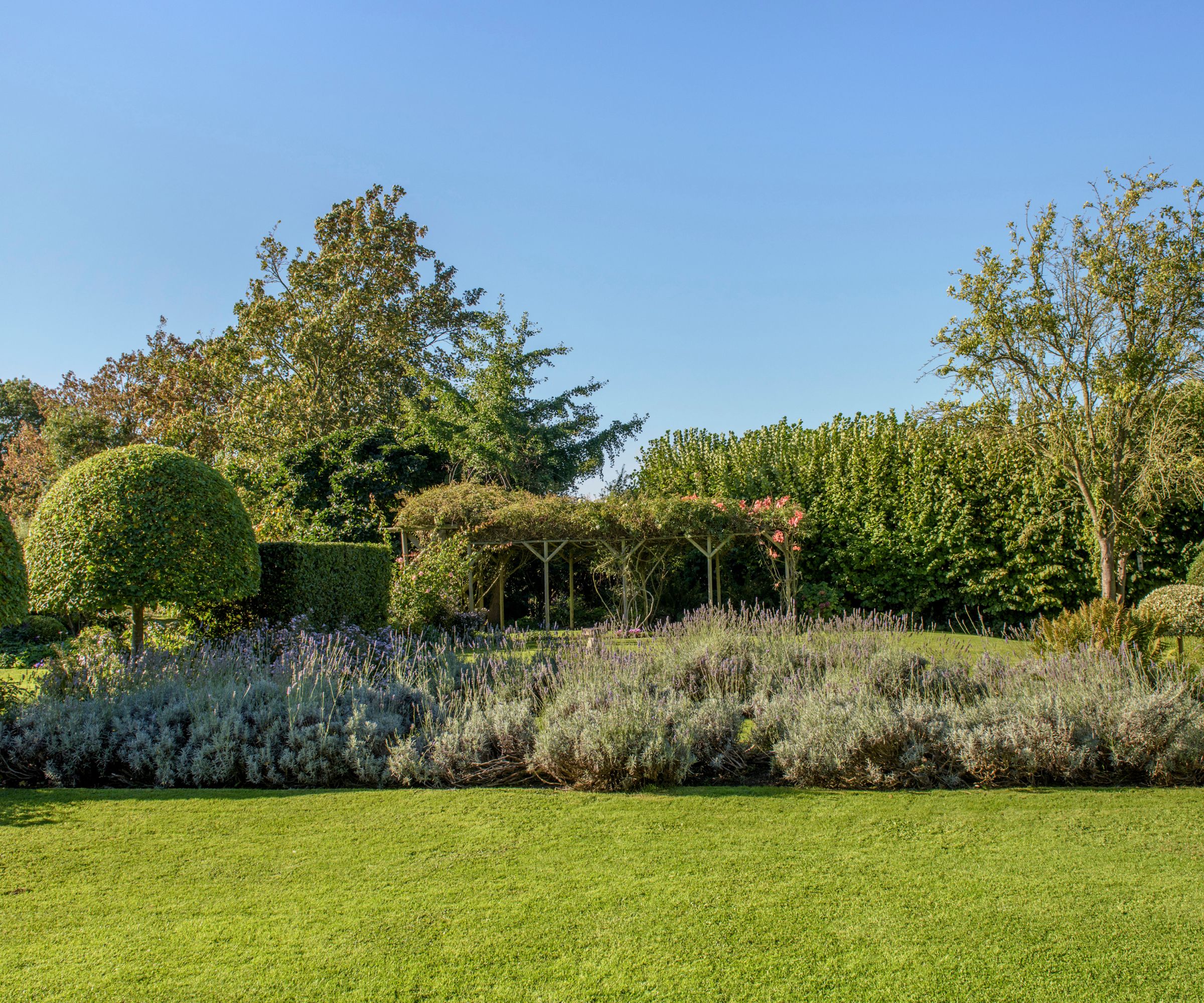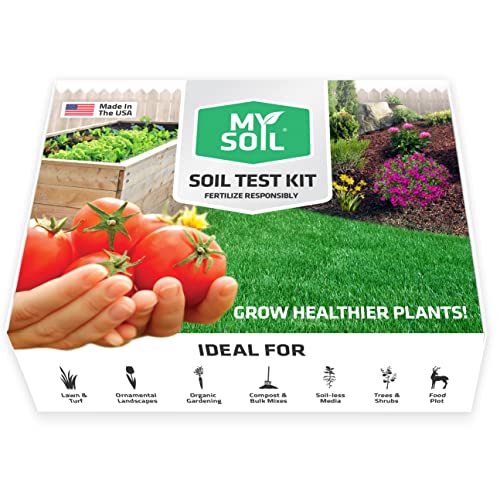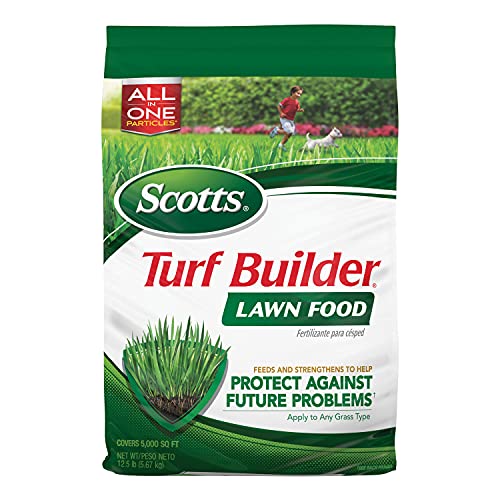Fall lawn care – 10 essential tasks to keep your grass healthy as the season turns colder
Just because the sun has gone away doesn't mean it's time to neglect your lawn

Chiana Dickson

As the seasons change and the air starts to feel cooler, it can be easy to overlook lawn care. It's tempting to leave your grass alone for fall, however, it's good practice to keep on top of lawn care into the fall months. Doing so will make a big difference over winter and you'll see the reward in early spring when your lawn looks luscious.
That's why lawn care should be near the top of your fall gardening checklist. It's also the perfect time to look for and prevent common lawn problems. And while you might not treat every issue right now, you can start to prepare the ground for lawn repairs later.
Here, we've rounded up top experts' advice for fall lawn care so yours can overwinter in good health.

10 essential fall lawn care tasks
We're all guilty of making some basic lawn care mistakes when it comes to tending to grass in fall, whether its underwatering or not feeding the soil. But, if you take the time to care for your grass now, you can be sure it will survive the frosty months and be thicker and greener than ever before by the time the warmer months arrive. Here are 10 fall lawn care tasks experts say you should be doing.
1. Seed your lawn

Seeding a lawn in early fall can help make a lawn green and thick the following spring. 'Fall seeding is crucial for a lush spring lawn. I recommend seeding when soil temperatures are between 50-65°F, typically six to eight weeks before the first frost,' says Ben McInerney, an arborist and landscape gardener.
'This timing allows roots to establish before winter dormancy. In my experience, using a mix of quick-germinating and slow-growing grass species ensures both immediate coverage and long-term lawn health,' he adds.
Seeding in fall comes under two categories: planting grass seed for the first time, and overseeding a lawn in fall.
Design expertise in your inbox – from inspiring decorating ideas and beautiful celebrity homes to practical gardening advice and shopping round-ups.
When seeding a new lawn, it's best for the soil to be moist, warm and soft. You should therefore wait until there’s been some decent rainfall and when the weather is temperate. It's also a good idea to first prepare the seedbed by taking measures to kill weeds but not grass and breaking up hard areas. 'For best results, we recommend aerating the soil before seeding. This allows for better seed-to-soil contact, promoting healthier root growth,' says Phil Catron, lawn care expert from NaturaLawn.
You can then go ahead and rake your seed into the soil and water well. Avoid making any puddles and or pooling water that may clump seeds together.
You should choose to overseed your lawn to revive it, like if you need to repair patches in grass. It's a rejuvenating lawn treatment that involves sowing grass seed directly into existing lawn to cover patches and other damaged areas. It improves lawn quality and repairs damage.

Ben McInerney is a qualified arborist with over 20 years of industry experience running a commercial lawn mowing and tree services business. He is the founder of GoTreeQuotes, a website that specialises in helping property owners find the best deals on tree removal and trimming.

Phil founded NaturaLawn of America (NLA) in 1986 when he saw a great need for nontoxic, organic-based lawn care. As an industry leader, Phil is passionate about discussing the importance of soil as a foundation for turf and plants, why organic fertilizers are better than traditional synthetic products, why synthetic chemicals and pesticides are detrimental and unnecessary, and why biological and biorational alternatives are safer for people and the environment.
2. Do a soil test

Experts say that fall is the perfect time to observe your lawn for any problems so that you can rectify them before the winter season kicks in. That's why, testing your lawn's soil's health in fall is wise.
'Conduct a soil test to identify any nutrient deficiencies or pH imbalances and correct them before winter sets in,' advises Phil.
Knowing your soil pH is essential for knowing what type of grass will thrive in your yard. Likewise, having the right level of nutrients in your soil will determine the growth of your lawn when spring comes around.
If there are any problems, like a deficiency, you can use fall as a time to fertilize and boost your lawn's soil ahead of spring growth.
3. Fertilize your lawn

Alongside seeding or overseeding your lawn, grass benefits greatly from a well-timed layer of fertilizer in fall. This is especially important if you have done a soil test and the results show a lack of nutrients available to your grass.
'Your grass can feed more through the months of September and March than it does the rest of the year. During those months of going dormant and wintering the grass is taking up food and storing it in their nodes so that it can have a good start to the season and to be able to push new grass up for the season,' says Kody Ketterling, lawn care expert
'With grass wanting and needing food, I work to do a fall weed and feed in the September timeframe and I will fertilize again at the end of October or start of November,' Kody explains.
Fertilizing in fall can also help your grass recover from summer heat and wear and tear, but it is important to know how to fertilize a lawn and with which fertilizers. Depending on what attention your lawn needs, you may want to use grass feed with different NPK plant fertilizer numbers - although nitrogen-rich fertilizers tend to be the most effective at boosting new growth.

Kody is the founder and CEO of K-IT Products, a company that makes sprinkler systems and other irrigation products.
4. Focus on fungi prevention

You might associate fall with the time of year to spot colorful mushrooms and fungi, but there are some pervasive types of fungi that infect lawns and cause damage. If you have had mushrooms growing in your yard before, now is the time to put some precautionary measures in place to protect your grass.
'Put a liquid fungicide on the lawn in the fall so that the liquid will seep down through the grass and will go through the root zone where grass comes from so that you can eliminate the fungus and prevent other fungus growing,' suggests Kody.
This is a good method for getting rid of mushrooms on your lawn and can prevent others cropping up. Just be careful to use gloves and wash your hands when working with unidentified fungi in your yard, as they could be dangerous to your health.
‘Things that can also help prevent the fungi is not overwatering your lawn if you are in a drought season,' says Kody. 'The best watering of the lawn is longer, deeper watering with less frequent watering times,' he adds.
5. Lay out insecticides

Garden pests are something all gardeners become familiar with, and dealing with them is a year-round task. Fall is the time where a lot of insect larvae will be active in soil and they will feed on grassroots and cause damage.
'Fall is ideal for breaking pest lifecycles. I suggest a two-pronged approach: applying a targeted insecticide for specific pests and encouraging beneficial insects through diverse plantings,' says Ben McInerney. 'This method has consistently reduced pest problems in the following growing season,' he adds.
Look for an environmentally friendly, biological insecticide treatment that targets and eradicates some of the most common damaging insect infestations, such as leatherjackets and lawn grubs. As Ben mentions, you can also encourage beneficial insects to your yard that will take care of your pest problem for you.
6. Get rid of moss on your lawn

While some people like the idea of a moss garden, others may see moss as an invader of their perfectly manicured lawn - and it could be a sign that something isn't quite right.
'Moss and algae in your lawn signal underlying issues with soil health. They compete with grass for sunlight, water and nutrients, making it harder for your lawn to thrive,' notes Phil Catron. 'To address this, start with a soil test to determine if you need to adjust pH or apply fertilizer. Improving soil fertility, drainage and air circulation are key steps in reducing moss and algae.
'Thinning tree branches to increase sunlight can also help. Addressing these conditions will promote healthier grass and keep moss and algae at bay,' Phil explains.
There are lots of ways to get rid of moss in lawn, including scarification and homemade treatments, such as using dish soap to kill moss, which may be easier for small moss patches.
7. Tend to brown patches

Brown patches in green grass can look unsightly but can be prevented easily if the lawn is given time to breathe and recover over fall.
'Brown patches on the lawn are complex because they can have many different meanings. Brown spots can mean fungus is in the yard, too much lawn fertilizer, it could be the season you are in depending on your growing season and type of grass,' says Kody.
The best thing to do is identify the cause of your brown patches and proceed with the best resolution accordingly.
'Core aeration followed by overseeding can revitalize these areas. I've found that incorporating compost into the aeration holes accelerates recovery,' says Ben.
8. Aerate your lawn

Many people ask why aerate a lawn each year as the task can be time-consuming. Aeration has a range of benefits, however, especially if you know when to aerate a lawn for the best effect and how to aerate a lawn correctly.
'Aeration is a vital part of fall lawn care as it reduces soil compaction, improves water and nutrient absorption, and creates an optimal environment for root growth of new grass seed following the harsh conditions of summer,' says Phil. 'Core aeration is particularly effective and can be done either by renting equipment or hiring a professional,' he adds.
As mentioned above, aeration can also help reduce moss and weed growth, reduce pest problems and help revive lawn from damage. Aeration is ideal when trying to fix a waterlogged lawn over fall and winter too.
You can simply insert a garden fork into the ground and moving it back and forth to crack the soil and allow airflow through. Although, a larger lawn area would benefit from core aeration, where you use a coring tool to take a core of soil from the ground. You can then choose to fill the holes this creates with sand to improve drainage.
9. Mow and rake your lawn

This one might be obvious to say, but as leaves fall onto your lawn it can be a good idea to rake them away. 'You need to keep all the debris, leaves, garbage off of the lawn area so that you don't create a possibility of bugs, fungus and other disease,' says Kody.
It's also essential to give your lawn a final mow before winter. 'I recommend that you mow your yard shorter than you mow it all year long,' says Kody. 'Mowing at the lower rate will reduce the changes for mold or fungus,' he adds. 'Do not mow your lawn too short as it can cause the roots to freeze and not come back. You want to leave enough grass so that there is coverage or protection for the lawn in the winter time.'
Rather than composting fallen leaves, consider using them as a natural leaf mulch for your flower beds.
10. Continue watering your lawn

It can be easy to think that the arrival of colder temperatures means you can stop watering your grass in fall. However, if you stop watering your lawn too soon, it could cause problems later down the line.
'The roots still need water and need to grow. Healthy roots will promote proper wintering and will help when the new season starts up,' says Kody. 'So make sure your lawn gets water throughout the fall up until you blow your sprinklers out and other types of precipitation start taking place,' he adds.
There's no one answer to when to stop watering a lawn in fall because you need to take into account your local temperatures and how much rainfall you are getting. Key things to look out for include dropping temperatures and heavier rain showers than recent weeks. Take care not to oversaturate the soil, as it could rot your lawn's roots.
FAQs
Is October too late to overseed my lawn?
While October is not too late to overseed your lawn, it should be carried out earlier if possible. Overseeding a lawn in late-October leaves the seeds at risk of winter frosts in November through to January. September is the best time to overseed your lawn, early October at most if you want to give the seeds the best chance.
You may not think it at first, but experts say fall is one of the most important times to pay attention to lawn care. 'By implementing these strategies, homeowners can significantly improve their lawn's resilience and appearance for spring,' says Ben McInerney. You should likewise get ready for essential winter lawn care to ensure your grass stays healthy through the coldest point of the year. It will then be time to take a look at your spring lawn care checklist.

Tenielle is a Gardens Content Editor at Homes & Gardens. She holds a qualification in MA Magazine Journalism and has over six years of journalistic experience. Before coming to Homes & Gardens, Tenielle was in the editorial department at the Royal Horticultural Society and worked on The Garden magazine. As our in-house houseplant expert, Tenielle writes on a range of solutions to houseplant problems, as well as other 'how to' guides, inspiring garden projects, and the latest gardening news. When she isn't writing, Tenielle can be found propagating her ever-growing collection of indoor plants, helping others overcome common houseplant pests and diseases, volunteering at a local gardening club, and attending gardening workshops, like a composting masterclass.
- Chiana DicksonContent Editor





